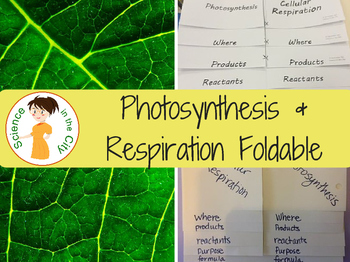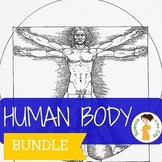I was recently asked to share my tips for setting up the classroom. I have been delaying writing this post because I'm not in a classroom this year, so I couldn't include pictures. But...I have been in a classroom the last 10 years (12 if you count my time as a teaching assistant), in a lot of different settings, so I can still offer my advice.
I have been a teaching assistant in a few different special education, self-contained classrooms, I have been an adjunct college professor (only on campus to teach my course), and then taught in the district I currently work in. I have been in 3 different classrooms in that district, and one year was on a cart.
There are certain features that I think are necessary in setting up a classroom, no matter what space you are in. I would like to share those here. I was also asked to share advice on setting up a classroom for multiple preps or multiple labs, that will also be part of this post.
Here are some views of a few of my classrooms over the years. (These are not all the classrooms I've been in, but those that I have photos of)
In all of those classrooms I think it is critical to have the following information (in no particular order). I will highlight how I did a few of those in some photos below
- Agenda so students know what is going on that day (and it helps keep me organized). If I have multiple classes in the same room I have done a few things:
- Erase and re-write
- Write on a smaller white board that I can prop up and switch out
- Write on chart paper and switch
- Divide the board down the middle and write both agendas up
- A place for students to hand in work. I usually just accomplish this with a bin (the dollar store dishpans work great).
- Student supplies. This can be split into two types depending on your students, or grouped together.
- Things that are left out for easy student access, such as pencil sharpener, kleenex, maybe tape, lotion.
- Student supplies that may be left out, or gotten out as needed. For me, these are crayons, colored pencils, markers, glue, maybe extra tape, rulers. I like to have these in small bins (pencil boxes from the dollar tree work fine, or other bins), so that you or a student can quickly put one out on each table. The colored bins on my cart were for that.
- A place for you to keep upcoming copies, emergency sub plan, answer keys, etc that is readily accessible. When I was on a cart I used a file box. Otherwise I usually had a divider on my desk.
- A place for students to get missing work or make up work if they are absent. I just use a file crate and make a folder for each day of the week. Then I make folders behind those for each week of the marking period. At the end of Monday I put the extra papers in Monday. When the next Monday rolls around I put them in week 1, etc. You may want to post near this updated grades by ID number, or a list of missing work.
- A schedule or list of times you are available for extra help.
- Seating chart posted, if you plan to use one, so students can quietly go check if they were absent or forgot where they sit.
- I also think it is important to have plenty of wall space or hallway space to display student work. Students make poster assignments, concept maps, anchor charts, etc. and it is great to show those off, and to use them as a reference point later in the year.
-
Finally....lab space....
Since this is a science classroom (although I have taught lab science in classrooms that were not labs as well. I think it is key to have a space to set up equipment before class that students know not to touch until they are instructed to do so. This might be a counter, a cart, a cupboard or wherever you have room. Ideally each class, or each different prep will have a space. When instructed, depending on how you run things, each group can go pick up one of each supply, or pick up a supply bin (my favorite), but you can get things set up and not have them right in front of students until you are ready. The gray bins on my cart are usually perfect for this unless you are doing something really big.
The other key, I think, with lab space is to have some space (again, a counter, cart, cupboard, wherever you can find room), where you can leave some lab equipment out. I'm not advocating a mess, but if you have some students who don't finish, or an experiment that goes longer than one day, or even want to leave out just one set for absent students, it's great to have a designated space to do that. Again, if you teach middle or high school and can designate a space for each different prep/class, that's even better. Work with what you have.
Since this is a science classroom (although I have taught lab science in classrooms that were not labs as well. I think it is key to have a space to set up equipment before class that students know not to touch until they are instructed to do so. This might be a counter, a cart, a cupboard or wherever you have room. Ideally each class, or each different prep will have a space. When instructed, depending on how you run things, each group can go pick up one of each supply, or pick up a supply bin (my favorite), but you can get things set up and not have them right in front of students until you are ready. The gray bins on my cart are usually perfect for this unless you are doing something really big.
The other key, I think, with lab space is to have some space (again, a counter, cart, cupboard, wherever you can find room), where you can leave some lab equipment out. I'm not advocating a mess, but if you have some students who don't finish, or an experiment that goes longer than one day, or even want to leave out just one set for absent students, it's great to have a designated space to do that. Again, if you teach middle or high school and can designate a space for each different prep/class, that's even better. Work with what you have.
- Optional ideas, depending upon your school policy:
- bathroom pass
- early finisher ideas
- work with no names, hanging up to be claimed
- late sign in.
- emergency sub folder (sometimes this is on your desk, or in the office)
I have resources that help with some of these (classroom scavenger hunt and signs, editable seating charts, and a few other goodies in my Back to School Pack). If you made it this far in the post, you may want to check it out by clicking below :).
All of this is personal style, and may be different from teacher to teacher. These are my preferences, and the things that I think are necessary, to whatever degree is possible, in any classroom setup.
What are your classroom necessities? What other questions do you still have?























































